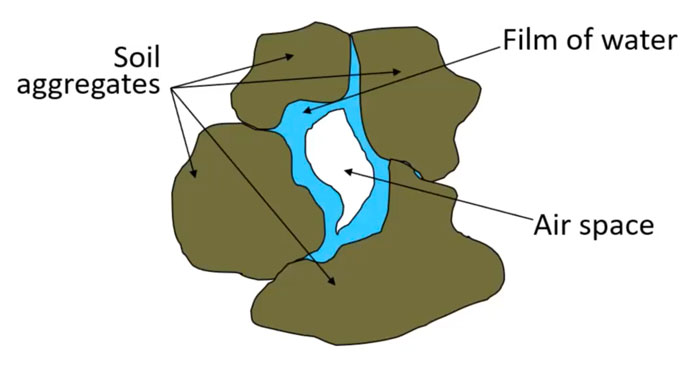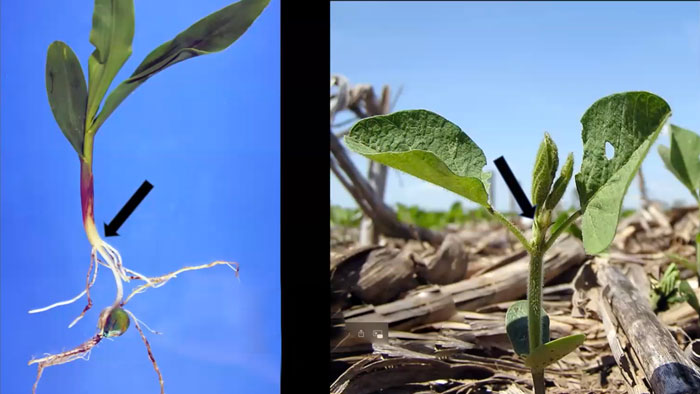Taking an environmentally sensitive approach to pest management
Effect of Standing Water on Young Corn and Soybean
Published:
Heavy rains have recently occurred in several parts of Missouri. This is a common occurrence during spring in the Midwest. In fact, May is the wettest month of the year in our region. If rain falls too quickly for soils to absorb, water can accumulate in parts of corn and soybean fields.

Standing Water
Standing water has several effects on plants, including loss of nitrogen or increased disease potential but lack of oxygen in the soil is of immediate concern plants use oxygen to produce energy needed for all of their life processes.

Soil Pours
Both air and water are stored in soil pours the space between soil aggregates. Water forms films around the soul particles and air is in the interior of the pores. As water enters the soil, the film of water expands leaving less space for air. In areas of fields were water accumulates soil pores are filled entirely with water and almost all air is excluded. With too much rain, standing water may cover part of, or all of, corn and soybean plants.
Oxygen
Water holds far less oxygen than air. Roots and soil microorganisms continue to take up oxygen and release carbon dioxide into the soil. Warm water holds even less oxygen then cool water and warm temperatures increase oxygen use by plants. So, warm temperatures aggravate the problem from standing water. If the source of water is flooding or run off, turbulence and moving water may mix small amounts of oxygen into the water.

Growing Points
The location of plant growing points, relative to the water surface, will affect plant survival. Corn growing points remain under the soil surface for several weeks, so young corn seedlings can be affected, even from shallow water. Soybean growing points are at the top of the plant, so they may remain above the water surface. I've discussed several factors that affect how long corn and soybean plants can survive standing water. Unfortunately, if they're growing points are covered with water, plants will not survive more than two to four days.
Subscribe to receive similar articles sent directly to your inbox!
REVISED: May 21, 2020